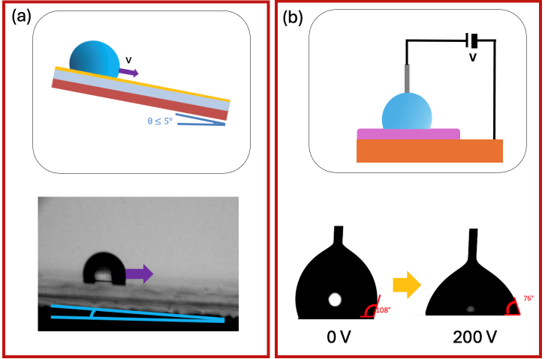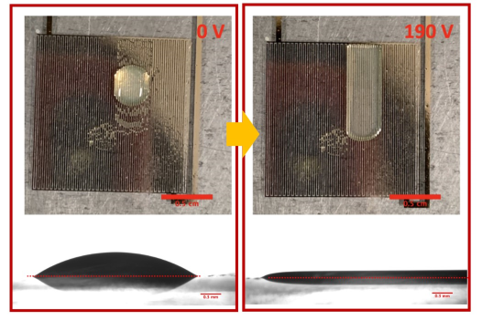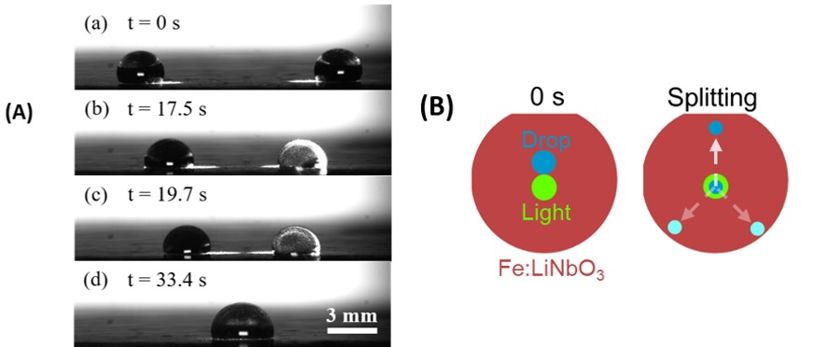 Wetting is one of the fundamental phenomena in interfacial physics, which affects the shape and motion of liquid droplets on solid surfaces and can be controlled by employing passive or active methods. In the first case (Fig. A), the wettability is tuned by acting on surface chemistry and morphology: for example, it is possible to realize lubricant infused coatings named LIS, that are defect-free surfaces and the friction acting on a moving droplet is drastically reduced. While in the case of active methods (Fig. B), external fields are used to tune the wettability of a surface. Among active methods, electrowetting, based on the application of external electric fields, is the most widely used. However, it presents some drawbacks: it requires fixed metallic electrodes, and it is restricted to only conducting droplets. To overcome these drawbacks, some new active methods as optowetting and dielectrowetting are investigated by our group.
Wetting is one of the fundamental phenomena in interfacial physics, which affects the shape and motion of liquid droplets on solid surfaces and can be controlled by employing passive or active methods. In the first case (Fig. A), the wettability is tuned by acting on surface chemistry and morphology: for example, it is possible to realize lubricant infused coatings named LIS, that are defect-free surfaces and the friction acting on a moving droplet is drastically reduced. While in the case of active methods (Fig. B), external fields are used to tune the wettability of a surface. Among active methods, electrowetting, based on the application of external electric fields, is the most widely used. However, it presents some drawbacks: it requires fixed metallic electrodes, and it is restricted to only conducting droplets. To overcome these drawbacks, some new active methods as optowetting and dielectrowetting are investigated by our group.
Electro-wetting
 We investigate the response of sessile droplets of liquid to external electric fields. In particular, we study the wetting properties of liquid crystals and ferrofluids, in different experimental conditions.
We investigate the response of sessile droplets of liquid to external electric fields. In particular, we study the wetting properties of liquid crystals and ferrofluids, in different experimental conditions.
Opto-wetting
 We realize optofluidic platforms based on the properties (photovoltaic and pyroelectric effect) of specific materials such as lithium niobate (LiNbO3) to actuate and control the motion of water droplets over different type of surfaces, including LIS (or SLIPS).
We realize optofluidic platforms based on the properties (photovoltaic and pyroelectric effect) of specific materials such as lithium niobate (LiNbO3) to actuate and control the motion of water droplets over different type of surfaces, including LIS (or SLIPS).
Most relevant publications:
– Varagnolo S. et al., Stick-Slip Sliding of Water Drops on Chemically Heterogeneous Surfaces. PRL, 2013.
